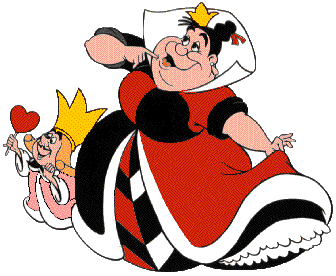Alice in Wonderland was my favorite childhood movie. This movie was something I loved as a child and I still enjoy watching occasionally. It was not the typical girl movie of my time where princesses waiting for princes to come and save them, or fell in love someone they’ve barely known. It showed a girl going on her own journey, making her own decisions. And it was just plain weird. Once I was in high school I read Lewis Carroll’s books and I even purchased The Annotated Alice which had notes in it about why Carroll wrote what he did or what he meant in a particular section. I have always been into weird and Alice in Wonderland was the first weird film I had seen. It was so different from anything else in my time, where we watched someone explore their own imagination rather than break some curse or run away from their evil step parent.
something I loved as a child and I still enjoy watching occasionally. It was not the typical girl movie of my time where princesses waiting for princes to come and save them, or fell in love someone they’ve barely known. It showed a girl going on her own journey, making her own decisions. And it was just plain weird. Once I was in high school I read Lewis Carroll’s books and I even purchased The Annotated Alice which had notes in it about why Carroll wrote what he did or what he meant in a particular section. I have always been into weird and Alice in Wonderland was the first weird film I had seen. It was so different from anything else in my time, where we watched someone explore their own imagination rather than break some curse or run away from their evil step parent.
There are some stereotypes about women that are evident in the movie though. While Alice is not waiting on a prince to come save her like other Disney heroines at the time, she did display some negative characteristics of women. She was easily controlled by the men in the movie, she ate what they told her to, went to fetch gloves for the white rabbit even though she was not his housemaid, follows the direction of the Cheshire cate, and sits and listens to Tweedledee and Tweedledum even though she is in a hurry (Disney, 1951). Throughout the entire movie, the only person she stands up to is the Queen of Hearts who is another woman. She is also shown to cry when she has to face hard decisions or things don’t seem to go as well as they could. When she grows too large to leave the first room she comes to, she begins to cry so hard that she ends up creating an ocean. And when she loses her way in Tulgey Wood, she sits down and cries until the Cheshire cat shows up to show her the way out (Disney, 1951). This shows women as being emotionally unable to handle heavy or hard decisions because we may break into tears at the thought of how “unfair” things are.

Alice shows many negative reactions in her emotions. She is constantly annoyed people and has many angry outbursts. When confronted by the flowers about her not being a flower, she angrily stomps off, offended that they think she is a weed, and tells them that “If I were my right size, I could pick every one of you if I wanted to. And I guess that’d teach you” (Disney, 1951). And says to herself that they could learn about manners. She is also pestered by a mother bird who is convinced that she is a serpent trying to steal her eggs and simply shrinks herself to avoid the bird, not dealing with the conflict, but running away. And another negatively represented female character is the Queen of Hearts. The Queen of hearts is shown as easily flattered, easy to anger, and mentally unstable. Neither are shown to warm, empathetic characters as most women in movies seem to be portrayed today.

While the movie was created in 1951, it was based on two book s by Lewis Carroll that were published in 1965 and 1971, in the Victorian era. In the Victorian era, women were meant to be well-educated homemakers. According to Miss Bingley in Pride and Prejudice,
“A woman must have a thorough knowledge of music, singing, drawing, dancing, and the modern languages….; and besides all this, she must possess a certain something in her air and manner of walking, the tone of her voice, her address and expressions…”(Austen, 1995)
Women were not allowed to work and had the have certain “accomplishments” in order to attract a husband and were not allowed to actively seek one (Hughes). This could be why Alice is not like other princesses, forever seeking “true love” and instead is on a creative journey through her own imagination.
References
Austen, J. (1995). Favorite Jane Austen novels: Complete and unabridged. New York: Dover Publications.
Disney, W. (Producer). (1951). Alice in Wonderland [Motion picture on VHS]. US: Walt Disney Productions.
Hughes, K. (n.d.). Gender roles in the 19th century. Retrieved March 06, 2016, from http://www.bl.uk/romantics-and-victorians/articles/gender-roles-in-the-19th-century